Tourism in Colombia is an important sector in the country’s economy. Foreign tourist visits were predicted to have risen from 0.6 million in 2007 to 2.5 million in 2014.
Historically an agrarian economy, Colombia urbanised rapidly in the 20th century, by the end of which just 17% of the workforce were employed in agriculture, generating just 6.1% of GDP; 21% of the workforce were employed in industry and 62% in services, responsible for 37.3% and 56.6% of GDP respectively.
Colombia’s market economy grew steadily in the latter part of the 20th century, with gross domestic product (GDP) increasing at an average rate of over 4% per year between 1970 and 1998. The country suffered a recession in 1999 (the first full year of negative growth since the Great Depression), and the recovery from that recession was long and painful. However, in recent years growth has been impressive, reaching 6.9% in 2007, one of the highest rates of growth in Latin America. According to International Monetary Fund estimates, in 2012 Colombia’s GDP (PPP) was US$500 billion (28th in the world and third in South America).

Trekking through Colombia is quickly becoming a popular way for travelers to experience the country.
Total government expenditures account for 28.3 percent of the domestic economy. Public debt equals 32 percent of gross domestic product. A strong fiscal climate was reaffirmed by a boost in bond ratings.[159] Annual inflation closed 2015 at 6.77% YoY (vs. 3.66% YoY in 2014).[160] The average national unemployment rate in 2015 was 8.9%, although the informality is the biggest problem facing the labour market (the income of formal workers climbed 24.8% in 5 years while labor incomes of informal workers rose only 9%). Colombia has Free trade Zone (FTZ), such as Zona Franca del Pacifico, located in the Valle del Cauca, one of the most striking areas for foreign investment.
Colombia is rich in natural resources, and its main exports include mineral fuels, oils, distillation products, precious stones, forest products, pulp and paper, coffee, meat, cereals and vegetable oils, cotton, oilseed, sugars and sugar confectionery, fruit and other agricultural products, food processing, processed fish products, beverages, machinery, electronics, military products, aircraft, ships, motor vehicles, metal products, ferro-alloys, home and office material, chemicals and health related products, petrochemicals, agrochemicals, inorganic salts and acids, perfumery and cosmetics, medicaments, plastics, animal fibers, textile and fabrics, clothing and footwear, leather, construction equipment and materials, cement, software, among others.

The Gulf of Morrosquillo (Spanish: Golfo de Morrosquillo) is a gulf of the Caribbean Sea bounded by the Colombian Departments of Sucre and Córdoba.
Colombia is also known as an important global source of emeralds,[167] and over 70% of cut flowers imported by the United States are Colombian. Non-traditional exports have boosted the growth of Colombian foreign sales as well as the diversification of destinations of export thanks to new free trade agreements.[169] Principal trading partners are the United States, China, the European Union and some Latin American countries.
The electricity production in Colombia comes mainly from renewable energy sources. 70.35% is obtained from the hydroelectric generation. Colombia’s commitment to renewable energy was recognized in the 2014 Global Green Economy Index (GGEI), ranking among the top 10 nations in the world in terms of greening efficiency sectors.
The financial sector has grown favorably due to good liquidity in the economy, the growth of credit and in general to the positive performance of the Colombian economy.[17][174][175] The Colombian Stock Exchange through the Latin American Integrated Market (MILA) offers a regional market to trade equities. Colombia is now one of only three economies with a perfect score on the strength of legal rights index, according to the World Bank.
Tourism in Colombia is an important sector in the country’s economy. Foreign tourist visits were predicted to have risen from 0.6 million in 2007 to 2.5 million in 2014.Tourism in Colombia is an important sector in the country’s economy. Foreign tourist visits were predicted to have risen from 0.6 million in 2007 to 2.5 million in 2014.
Tours & Tickets in Colombia
| COLOMBIA TRAVEL GUIDE |
| Related Articles |
If you’re travelling to Colombia, we help you:

![]() General Information About Colombia: National symbols of Colombia – Colombia: living history – Geography of Colombia – Economy of Colombia – Languages of Colombia
General Information About Colombia: National symbols of Colombia – Colombia: living history – Geography of Colombia – Economy of Colombia – Languages of Colombia
![]() Practical information about Colombia: Climate – How to get to Colombia – Visa, Customs, Documentation and Taxes – Embassies and consulates in Colombia – Health and vaccination – Emergency numbers – Culture of Colombia – Measures and Electricity – Currency of Colombia
Practical information about Colombia: Climate – How to get to Colombia – Visa, Customs, Documentation and Taxes – Embassies and consulates in Colombia – Health and vaccination – Emergency numbers – Culture of Colombia – Measures and Electricity – Currency of Colombia
![]() Tourist Information about Colombia: General Information – Practical information about Colombia – Adventure Colombia – Hotels and accommodations in Colombia – How to Get to Colombia – Gastronomy in Colombia – Colombia’s Best Festivals and Carnivals – Tourist Attractions in Colombia – Foreign Embassies and Consulates in Colombia – Tips and advice for travel in Colombia – Top 10 Colombian Travel Destinations – Natural regions of Colombia – Cultural Tourism in Colombia – UNESCO Intangible Cultural Heritage Lists – UNESCO Heritage Sites in Colombia – Top 10 amazing places to visit in Colombia – Colombian Cuisine – Tourism of Nature
Tourist Information about Colombia: General Information – Practical information about Colombia – Adventure Colombia – Hotels and accommodations in Colombia – How to Get to Colombia – Gastronomy in Colombia – Colombia’s Best Festivals and Carnivals – Tourist Attractions in Colombia – Foreign Embassies and Consulates in Colombia – Tips and advice for travel in Colombia – Top 10 Colombian Travel Destinations – Natural regions of Colombia – Cultural Tourism in Colombia – UNESCO Intangible Cultural Heritage Lists – UNESCO Heritage Sites in Colombia – Top 10 amazing places to visit in Colombia – Colombian Cuisine – Tourism of Nature
![]() Travel Guide of Colombia: Colombia Travel Guide – Amazonas – Antioquia – Arauca – Atlántico – Bolivar – Boyacá – Caldas – Caquetá – Casanare – Cauca – Cesar – Chocó – Córdoba – Cundinamarca – Guanía – Guaviare – Huila – La Guajira – Magdalena – Meta – Nariño – Norte de Santander – Putumayo – Quindio – Risaralda – San Andrés y Providencia – Santander – Sucre – Tolima – Valle del Cauca – Vaupés – Vichada
Travel Guide of Colombia: Colombia Travel Guide – Amazonas – Antioquia – Arauca – Atlántico – Bolivar – Boyacá – Caldas – Caquetá – Casanare – Cauca – Cesar – Chocó – Córdoba – Cundinamarca – Guanía – Guaviare – Huila – La Guajira – Magdalena – Meta – Nariño – Norte de Santander – Putumayo – Quindio – Risaralda – San Andrés y Providencia – Santander – Sucre – Tolima – Valle del Cauca – Vaupés – Vichada
Flights, Cheap Airfare Deals & Plane Tickets |








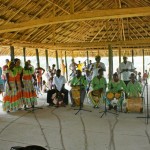


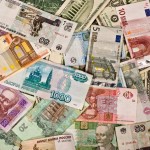

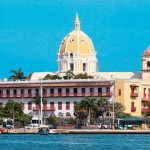
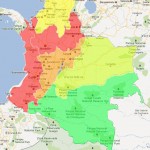
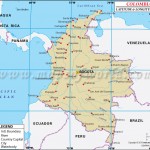



Wedding HairstylesJanuary 27, 2020
An impressive share, I just given this onto a colleague who was doing just a little analysis on this. And he in truth purchased me breakfast as a result of I found it for him.. smile. So let me reword that: Thnx for the deal with! However yeah Thnkx for spending the time to discuss this, I feel strongly about it and love studying extra on this topic. If attainable, as you turn out to be experience, would you mind updating your weblog with extra details? It is highly helpful for me. Massive thumb up for this weblog submit!
CBD Hemp OilJanuary 6, 2021
Good Morning everybody , can anyone advise where I can buy Hawaiian Pog CBD Vape Juice By Naked 100 CBD?
KaydenceJanuary 17, 2021
is it bad to hold vape in your lungs